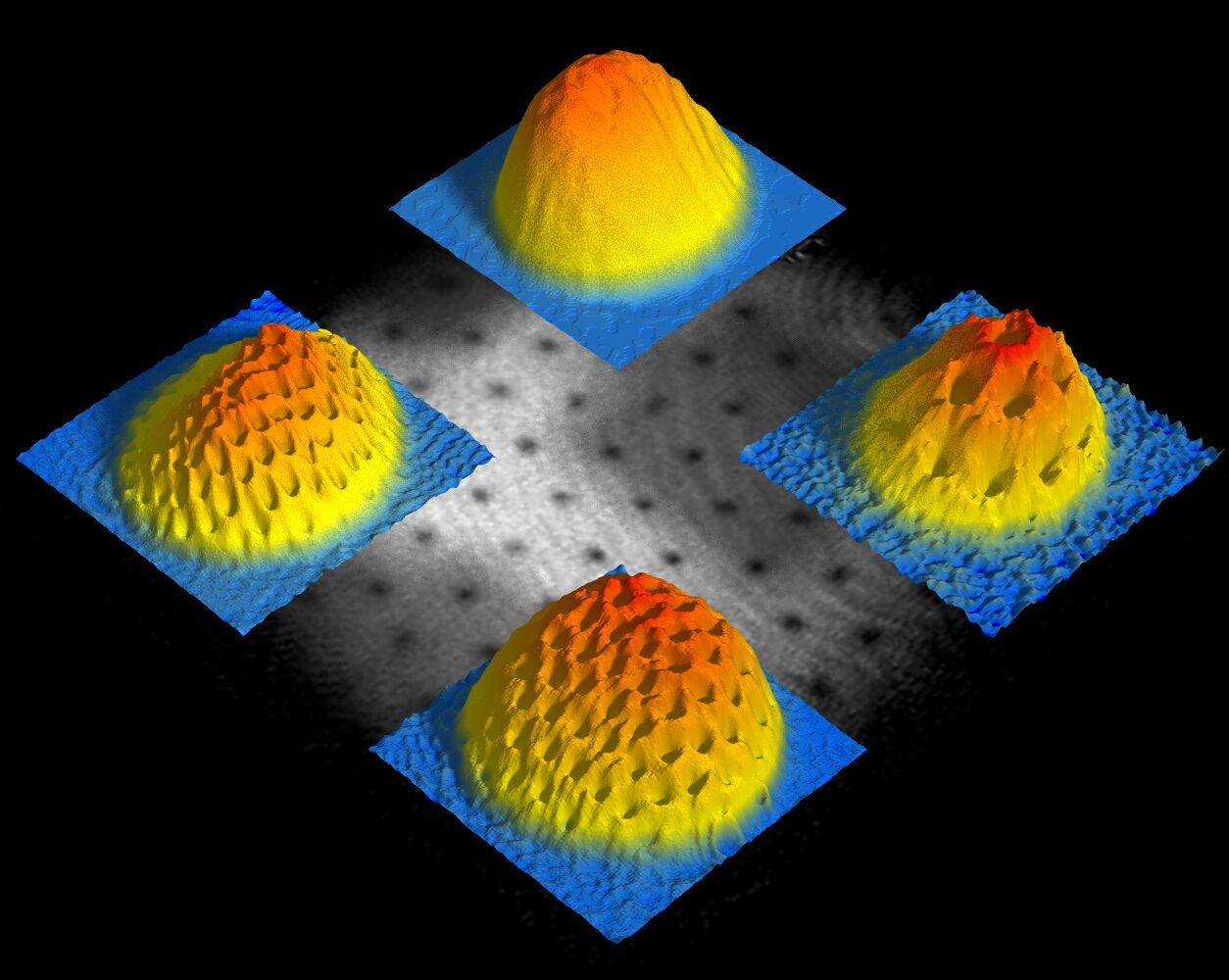
Quantum Gases
Dilute atomic gases offer unprecedented opportunities for exploring
physics under unusual conditions, and since the discovery of
Bose-Einstein condensation in 1995, much of my research effort has
been devoted to this subject. Two important reasons for the
flexibility of these systems is that bulk energies are so small that
they can easily be manipulated by magnetic fields and lasers, and the
atoms can be detected optically with high resolution.
 |
One my present interests is the properties of rapidly gases. As illustrated in the picture, which is from Wolfgang Ketterle's group at MIT, it is possible to image gas clouds with a large number of vortices and investigate their structure and dynamics in considerable detail. When the frequency of rotation of the cloud approaches the oscillation frequency of atoms in the trap, atoms are expected to occupy mainly the lowest Landau level in the presence of the Coriolis force. The physics then becomes similar to that of electrons in a magnetic field under conditions for observing the quantum Hall effects. I expect that studies of vortex dynamics in this regime will be able to provide valuable insights into vortex motion under more general conditions. |
Another theme of my current work is the properties of strongly correlated Fermi systems. In dilute gases, interactions between atoms can be tuned by means of magnetic-field sensitive molecular resonances, so-called Feshbach resonances. By changing the magnitude of the magnetic field, the effective interaction can be tuned to essentially any value, either positive or negative. This makes it possible to explore the crossover from a gas of fermionic atoms with a weakly attractive interaction, which is described by the Bardeen-Cooper-Schrieffer theory, to a gas of diatomic molecules which can undergo Bose-Einstein condensation. This is a problem of interest also in the context of high-temperature superconductors.
Supernovae and Neutron Stars
Neutrinos play an important role in stellar collapse, neutron star
formation and the thermal evolution. A major source of uncertainty in
present simulations is a lack of knowledge of properties of neutrinos
in matter. One thrust of my research is to develop a better
understanding of correlations in nucleon matter in order to calculate
better the required nuclear properties.
Last updated: November 2004.